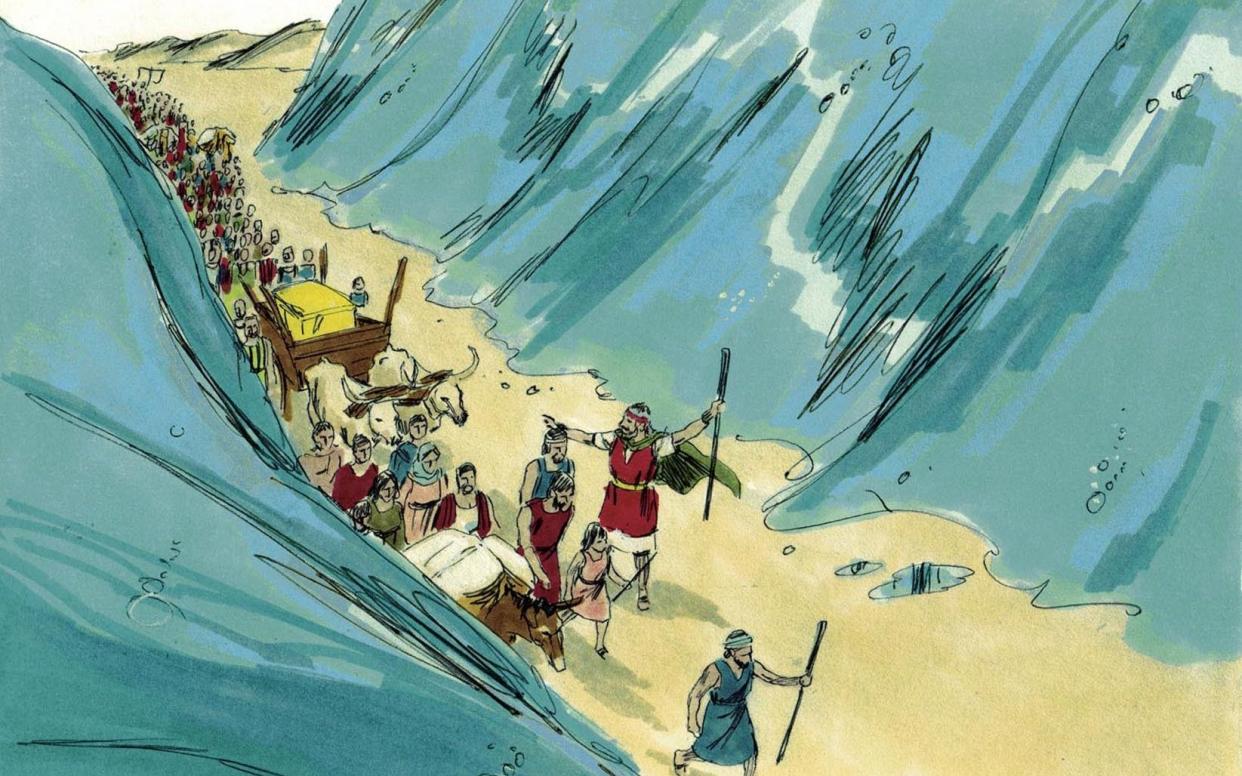Moses’ parting of the Red Sea may not have been a miracle after all

- Oops!Something went wrong.Please try again later.
Meteorological phenomena could be behind the parting of the Red Sea, which allowed Moses to help the Israelites escape the Egyptians, a study suggests.
Rebekah Garratt and Rikesh Kunverji, students from the University of Leicester’s School of Biological Sciences, argue there were four natural occurrences which could account for the drying of the area.
Negative surges, eastern winds, tidal surges and Rossby Waves, may have caused a resurgence of water large enough to enable a crossing on foot.
Writing in the Journal of Interdisciplinary Topics, the pair conclude: “Investigating into the methods in which the waters may have receded, allowing Moses to cross safely, may be dependent on having ‘perfect’ conditions, but are still physically feasible events.
“Meteorological phenomena are known to be notoriously unpredictable and can lead to chaotic chains of events leading to extreme phenomena, which may have been viewed by bystanders as the ‘parting of the sea’.
“Whether a miraculous act of God or due to some of the unlikely, coincidental phenomena discussed in this paper, the chance of ‘parting’ is not zero.”
How it may have happened
The parting of the Red Sea appears in the Book of Exodus, which describes how Moses: “...stretched out his hand over the sea; and the Lord caused the sea to go back by a strong east wind all that night and made the sea into dry land, and the waters were divided”.
The Leicester team said that a phenomenon called “wind setdown” in which a particularly strong and persistent wind can lower water levels in one area while causing water to build up downwind.
Wind setdowns, which are the opposite of storm surges, have been widely documented, including in the Nile delta in the 19th century when a powerful wind pushed away about five feet of water and exposed dry land.
The team said the wind speed would need to be “considerable” to have kept the water apart for an extended period.
A second possibility is that stronger-than-normal spring tides coupled with windy conditions, could have allowed water levels to drop to such an extent that a drying area was formed, allowing the Israelites to cross.
Many believe that the Gulf of Suez would be the best location for Moses to have crossed because it is known for its large tidal fluctuations.
The team write: “Tidal resonance occurs when a sudden, unexpected external input, such as extreme wind, excites one of the resonant modes of a local region of the Red Sea, leading to a much more extreme low tide, exposing greater areas of the seabed.”
Napoleon almost caught out
The phenomenon is thought to be how Napoleon and his army crossed the Red Sea in 1789.
Louis-Antoine Fauvelet de Bourrienne, Napoleon’s private secretary wrote: “On the morning of the 28th we crossed the Red Sea dry shod... Near the port the Red Sea is not above 1,500 metres wide, and is always fordable at low water... at high tide the water rises five or six feet at Suez, and when the wind blows fresh it often rises nine or ten feet.”
Napoleon - like the Egyptians - was almost caught out by the rising tide and drowned.
Negative surges, in which coastal waters fall to lower levels during an extreme weather event, may also have dried out the Gulf of Suez, the paper suggests, while a natural occurrence called Rossby Waves could also be to blame.
Rossby Waves naturally occur in rotating fluids and appear in oceans and seas because of the rotation of the Earth.
“They make the tide higher than usual,” the paper surmises. “The waves move vast amounts of water meaning an occurrence at the Red Sea could have moved vast amounts of water, causing the tide to recede by an unusual amount, leaving shallow or no water for the Israelites to walk through.”
The Journal of Interdisciplinary Science Topics is designed to help undergraduates understand scientific paper writing, peer review and publishing and while the topics can be fun, the science must be accurate.
Previous research topics have included, “The number of lies Pinocchio could tell before the weight of his nose would cause his neck to break” and “Would it be possible for every Canadian to own a polar bear?”
The students concluded that Pinocchio could tell only 13 lies and Canada could not sustain such a population of polar bears.

